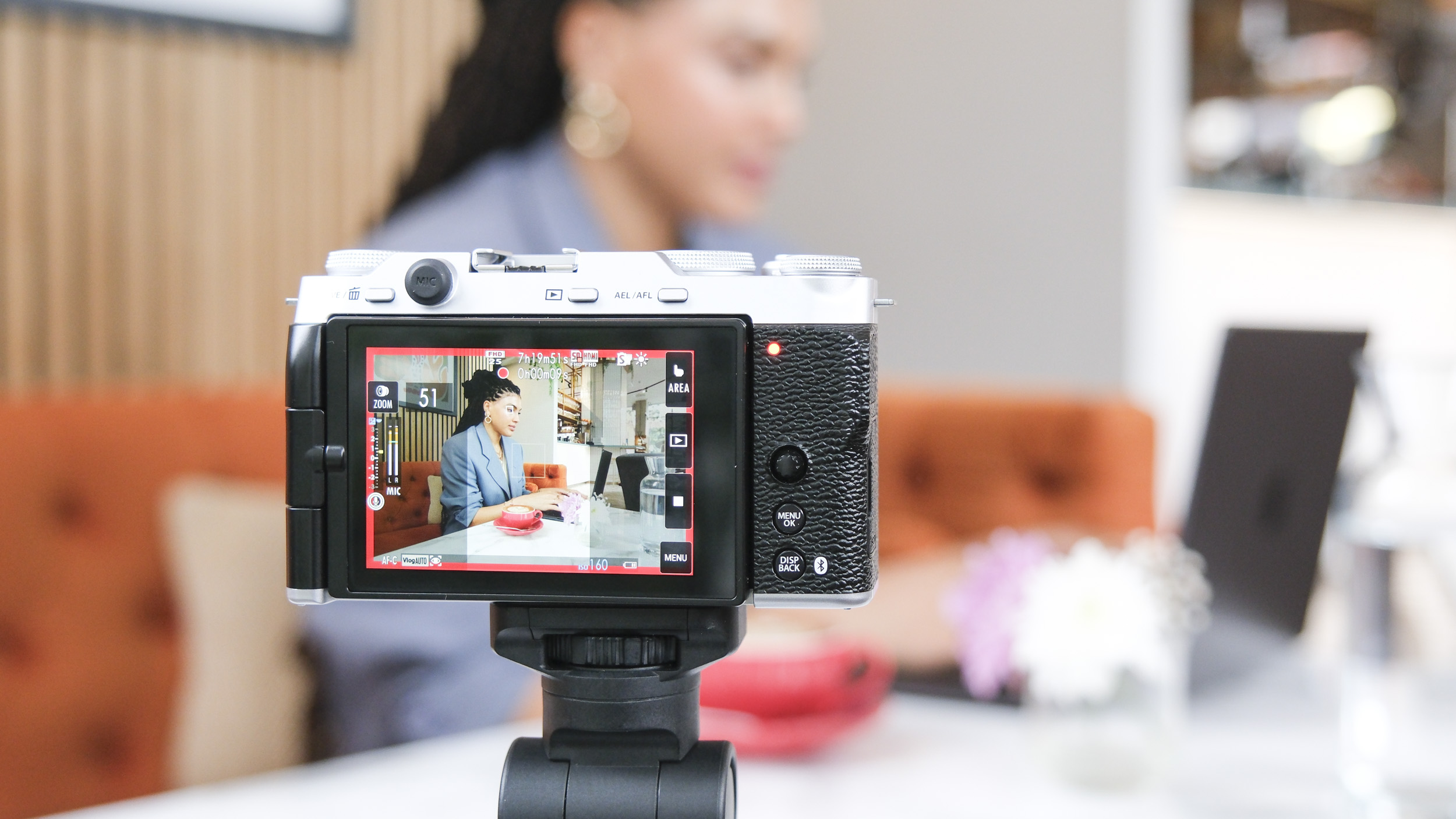Fujifilm’s new X-M5 is a feature-rich beginner mirrorless camera that lacks one key thing
It's retro, it's tiny, and at under $800 / £800 / AU$1,500 the X-M5 is hard to beat

Fujifilm has unveiled a new video-focused beginner mirrorless camera, the X-M5. It's positively tiny and very powerful, being Fujifilm's smallest and lightest X-series camera (in its current lineup), while packing video features ranging from 6K video in color-rich 10-bit to an all-new 9:16 vertical video mode.
As with the X-T50, you get Fujifilm's trending Film Simulations on tap, 20 of them in all, accessible through a dial on the top of the camera. And the retro aesthetic doesn't begin and end with the camera's dials – the faux leather finish is the classic Fujifilm look that many creators have come to love.
Starting at $799 / £799 / AU$1,449 body-only, the X-M5 joins the X-T30 II as the cheapest X-series camera available. It boasts better video features and Fujifilm's latest autofocus algorithms, with improved subject detection AF. However, the X-T30 II looks a better bet for photographers given that it has a viewfinder for composing shots.
All round, the X-M5 offers incredible bang for buck, so is it the perfect starter camera? I've already shared more thoughts in my X-M5 hands-on review, and my takeaway is that's while there much to love about the camera, it misses one key feature.

If I had one wish
The X-M5 is a feature-rich camera, and you'll struggle to find a better hybrid camera for the money. In addition to 6K internal 10-bit video recording you get 4K video with cinematic 60fps plus slow-motion 240fps recording in 1080p resolution.
There are also a few firsts for Fujifilm. The X-M5 has triple internal mics that can be used individually or together in combinations, ideal for isolating a voice in front of and/or behind the camera (complete with 'steady state' noise reduction), plus wired USB file transfer from camera to phone for fast and reliable uploads. That high-resolution 6K video also provides enough detail for a new 9:16 vertical video mode (see picture, below) which records at 1080p resolution without you needed to rotate the camera, together with record-time presets for social.
These are all superb features for content creators, and the 26MP APS-C sensor and X-Processor 5 engine combination is exactly the same as in the pricier Fujifilm X-S20. So surely the X-M5 is an outright hit? Well, not quite.
Sign up for breaking news, reviews, opinion, top tech deals, and more.

As a video-focused model, the X-M5 sits below the X-S20, and the two models actually share many of the same features, despite the big difference in price. While the X-M5 costs $799 / £799 / AU$1,449 or $899 / £899 / AU$1,649 with the 15-45mm kit lens, the X-S20 costs $1,299 / £1,249 / AU$2,349 (although it's currently 10% off).
So where do the two models differ? Mainly in design. I've unpacked this more in my hands-on review, but the one key feature that the X-M5 lacks is in-body image stabilization (IBIS) to smooth out handheld videos. No beginner camera has this feature, but the X-M5 is otherwise so capable that the absence of IBIS is noticeable. It has digital image stabilization instead, which is far less effective, plus it imposes a minimum 1.32x crop of the image area.
Of course there are other reasons why the X-S20 costs more. But if I was to add one feature to the X-M5, it would be IBIS. With that feature, it would feel like a complete video camera for beginners. Add its tiny form factor, paired with, say, the 27mm f/2.8 pancake lens, and it would also be a powerful walkaround camera for photography. Still, the X-M5 is a super-impressive addition to Fujifilm's retro range of mirrorless cameras, and it hits the shelves on November 14.
You might also like

Tim is the Cameras editor at TechRadar. He has enjoyed more than 15 years in the photo video industry with most of those in the world of tech journalism. During his time as Deputy Technical Editor with Amateur Photographer, as a freelancer and consequently editor at Tech Radar, Tim has developed a deeply technical knowledge and practical experience with cameras, educating others through news, reviews and features. He’s also worked in video production for Studio 44 with clients including Canon, and volunteers his spare time to consult a non-profit, diverse stories team based in Nairobi. Tim is curious, a keen creative, avid footballer and runner, and moderate flat white drinker who has lived in Kenya and believes we have much to enjoy and learn from each other.